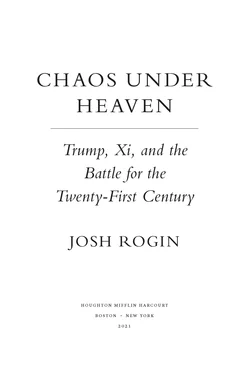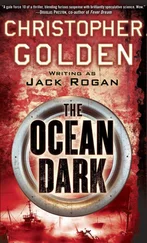In an interview in March 2020, Shi remembered going to the mine where the miners got sick, but she claimed that the Wuhan researchers discovered that the cause was a fungal infection, not a virus. Nevertheless, the WIV sent four separate missions to that Yunnan mine in 2012 and 2013 to search for bat coronaviruses, not fungi. The trips to Yunnan took place while some of the miners were still in the hospital. When Shi published a paper in 2016 about what the WIV had found on these missions, she referred to one of the new viruses that had been collected in the Yunnan mines as BtCoV/4991. As noted previously, she later admitted this was the same exact virus she later called RaTG13.
These revelations were significant for several reasons. For one thing, they suggest that the WIV had known, or had reason to know, for six years that RaTG13 was capable of infecting humans. For another thing, they made clear that the closest known relative (and possible ancestor) of SARS-CoV-2 had been discovered far, far away from Wuhan—the city where they both eventually gained such notoriety.
Any theory of the pandemic’s origins therefore had to account for the fact that the SARS-CoV-2 outbreak first appeared in Wuhan, on the doorstep of the lab that possessed the world’s largest collections of bat coronaviruses and that possessed the closest known relative of SARS-CoV-2, RaTG13. If SARS-CoV-2 had emerged naturally in bats from caves in Yunnan Province, then the only possible explanation of its appearance in Wuhan, over one thousand miles away, was that SARS-CoV-2 or an immediate predecessor somehow had traveled with an animal for one thousand miles—only to spill over ten miles from the WIV and less than one thousand feet from the Wuhan Center for Disease Control lab.
The natural-spillover theory looked even more improbable in light of the strong probability that, if the virus had indeed made a “natural” one-thousand-mile journey from Yunnan to Wuhan, there likely would have been signs of smaller outbreaks along the way. RaTG13 had been transported to Wuhan by trained researchers, but if the natural-spillover theory was correct, SARS-CoV-2 or its immediate ancestor had traveled to Wuhan by hitching a ride with an animal host. This would mean that these highly infectious coronaviruses somehow stayed perfectly benign until they got to Wuhan, and only at that moment began to infect humans.
Even Shi admitted in her March interview that when she was first told about the virus outbreak in her town, she thought the officials had gotten it wrong, because she would have guessed that such a virus would break out in southern China, where most of the bats live. “I had never expected this kind of thing to happen in Wuhan, in central China,” she said.
The spillover theory, in short, had huge holes in it. And its shakiness invited alternate hypotheses, including one that, at first glance, seemed beyond the pale to many observers in the United States. Many—but not all.
The Lab Accident Theory
By April, US officials at the NSC and the State Department had begun to compile another set of circumstantial evidence, one supporting a different theory: that the WIV lab was actually the source of the virus, not the seafood market. The former explanation for the outbreak was entirely plausible, they felt, whereas the latter would be the greatest coincidence in the history of the world. But the officials couldn’t say that out loud because there wasn’t firm proof either way. And if the US government accused China of lying about the outbreak without firm evidence, Beijing would surely escalate tensions even more, which meant that Americans might not get the medical supplies that were desperately needed to combat the rapid spread of SARS-CoV-2 in the United States.
Arkansas senator Tom Cotton seemed not to have been concerned about any of those considerations. On February 16, he had said on Fox News that the virus might have come from China’s biowarfare program—suggesting, in other words, that it had been engineered deliberately to kill humans. He also had criticized the Chinese government’s lack of transparency and called for more evidence: two points that were entirely deserved but that were undermined by Cotton’s thinly veiled and unsubstantiated accusation that the Chinese government had deliberately engineered SARS-CoV-2.
By invoking the notion of a bioweapon, Cotton had left himself open for criticism and was immediately tarred as a conspiracy theorist. Scientists largely agree that the virus was not “engineered” to be deadly; SARS-CoV-2 showed no evidence of direct genetic manipulation. Furthermore, the WIV lab had published their research about bat coronaviruses that can infect humans—not exactly the level of secrecy you would expect for a secret weapons program.
But Cotton hadn’t only done himself a disservice; he also had undermined the ongoing effort in other parts of the US government to pinpoint the exact origins and nature of the coronavirus pandemic. From then on, journalists and politicians alike would conflate the false idea of the coronavirus being a Chinese bioweapon with the plausible idea that the virus was the product of a gain-of-function experiment and accidentally had been released from the WIV lab.
At first, many scientists and officials were reluctant to speak publicly about the lab accident theory, lest they be attacked in the way Cotton was, as a conspiracy theorist or worse. But after I published a Washington Post column on the Wuhan cables on April 14, a more open discussion began about whether the natural-spillover theory or the lab accident theory more likely explained the origin of the pandemic.
Many people in and around the Trump administration came out of the woodwork to express their long-held skepticism of the natural-spillover theory. For instance, Pompeo, who had refused to share the cables with me but who had always believed the lab accident was more likely than a natural spillover, publicly declared there was “enormous evidence” to that effect beyond the Wuhan cables themselves. But he refused to produce any other proof.
At the same time, some members of the intelligence community leaked to my Washington Post colleagues that they had discovered “no firm evidence” that the outbreak originated in the lab. That was true in a sense. Pottinger had asked the intelligence community to look for evidence of all possible scenarios for the outbreak, including a lab accident, but they hadn’t found any firm links. But absence of evidence is not evidence of absence. There was a gap in the intelligence. The insiders who had tried to sow doubt about the cables with my Post colleagues didn’t know either way. They could have just as easily leaked that there was “no firm evidence” that the pandemic had originated in the seafood market, which also would have been technically accurate while likewise revealing nothing new.
Large parts of the scientific community also decried my report, pointing to the fact that natural spillovers have been the cause of other viral outbreaks, and that they were the culprit more often than accidents. But many of the scientists who spoke out to defend the WIV lab were Shi’s research partners and funders, like the head of the global public health nonprofit EcoHealth Alliance, Peter Daszak; their research was tied to hers, and if the Wuhan lab were implicated in the pandemic, they would have to answer a lot of tough questions.
Likewise, the American scientists who knew and worked with Shi could not say for sure her lab was innocent, because there’s no way they could know exactly what the WIV lab was doing outside their cooperative projects. Beijing threatened Australia and the EU for even suggesting an independent investigation into the origins of the virus.
Even Anthony Fauci, when asked, said there was “no scientific evidence” the virus had been engineered or manipulated in the lab. But he, too, was attacking a straw man. The virus didn’t have to be engineered in order for it to have originated in the WIV lab. When pressed on whether it could have escaped from the lab by accident, Fauci said it was irrelevant because until that scenario, it had been of natural origin anyway. He was never asked directly about the gain-of-function research the WIV lab was doing, which would explain how a “natural spillover” could happen in a lab setting (given that the lab was essentially taking the same evolutionary processes that could lead to a natural spillover and speeding them up over and over and over again). Like Daszak, Fauci also had a conflict of interest: he was the head of the National Institute of Allergy and Infectious Diseases, which backed the NIH in its support of the gain-of-function research at the WIV lab. (The Trump administration suspended the US government funding for that program in April.)
Читать дальше











